|
Location:
Cordillera Blanca Mountains,
Peru. |
Grid
Reference:
9� 35' 34" S, 77� 10' 42" W. |
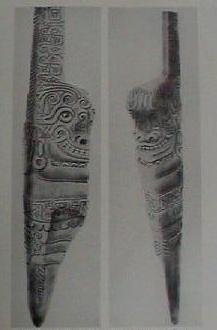
 Chavin
de Hu�ntar:
(Underground Citadel).
Chavin
de Hu�ntar:
(Underground Citadel).
Capital of the Chav�n culture.
Chavin de
Hu�ntar, is a complex
of steeply walled platforms, honeycombed with stone-lined passages and
surrounding a sunken plaza. It is unique amongst Pre-Columbian temple
groups. The principle edifice, called 'The Castillo' is faced with cut-stone
blocks in courses of varying widths. The walls rose 17m, above a pedestal of
cyclopean blocks. Inside the core are at least three irregular storeys of
stone-lined galleries, chambers and ventilating shafts.
'El-Toro'/'Lanzon' (right),
marked the exact centre of the underground stone-lined chambers.
(20)
(Click
here for map of the site)
The complex was laid out according to a
pre-conceived plan; an area of 300,000 sq. ft. was flattened and terraced in
preparation and the whole site was aligned to the cardinal points.
A number
of engraved obelisks, cyclopean masonry (i.e. a 30 ft long lintel), and a
network of cut-rock tunnels highlight the unusual quality of the complex.
Networks of subterranean tunnels cut from
natural rock have been found at the site. (19)
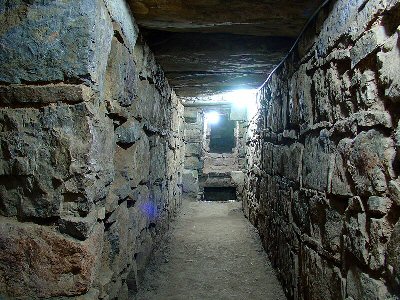
The Underground tunnels.
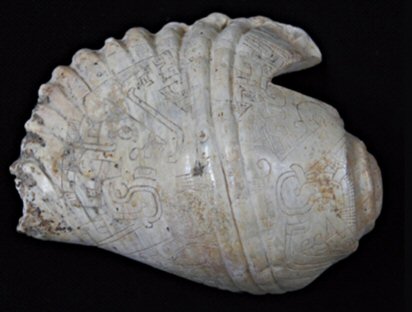
Article: (Discovery News 2010):
Scientists analyse 3,000 year old Conch
Shell.
'Archaeologists unearthed 20 complete
Strombus galeatus marine shell trumpets in 2001 at Chav�n de Hu�ntar,
an ancient ceremonial centre in the Andes. Polished, painted and etched with
symbols, the shells had well-formed mouthpieces and distinct V-shaped cuts.
If the shells were played inside the stone
chamber in which they were found, the drone would have sounded like it was
coming from several different directions at once. In the dimly lit religious
centre, it would have created a sense of confusion'.
(Other Examples of
Accoustic Phenomena)
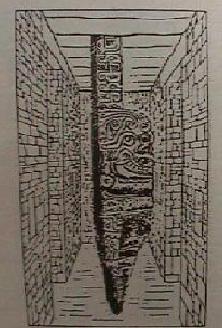 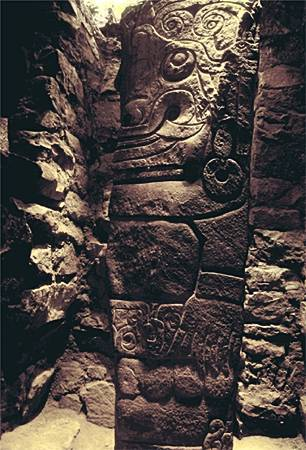 
This
incredible obelisk, called 'El-Toro' (the Bull), or 'Lanzon'
(the Lance), was originally situated in the very centre, deep in the underground catacombs at Chavin de Huantar. The top of it, at 4.5m, protruded through the
ceiling, and the floor above.
The
Lanzon is
presumed to have been the primary deity of the Chavin culture.
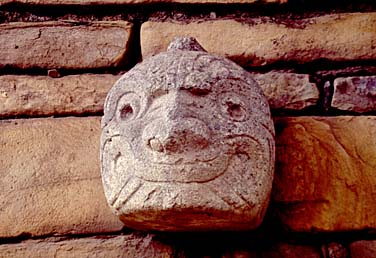
The Jaguar-god inlaid into a wall
(Similar in style to the heads at Tiahuanaco)
The main temple (A) and
Portillo were decimated through 19th century looting. The site is now a
world heritage site and is under restoration and conservation.
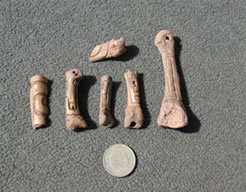
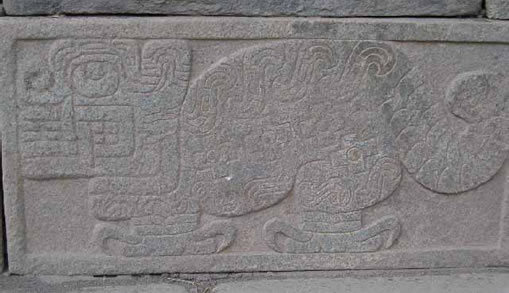
(Left) Carved human
bones, (Right) Jaguar panel from circular Plaza.
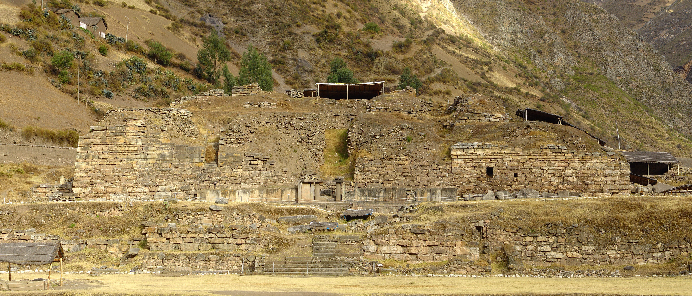
The remains of El-Castillo.
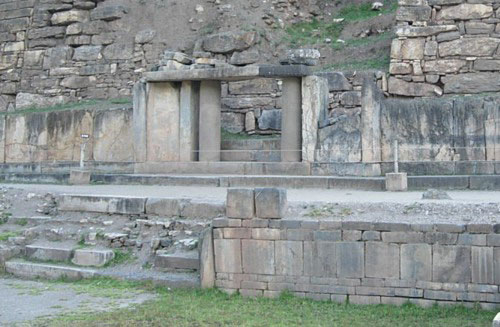
Close-up of the grand portal to
El-Castillo.
Chronology
Chavin De
Huantar is officially dated at approximately 800 BC.
The Chav�n culture dates to around 1000 B.C. (if not
earlier), a period called the
Early Horizon.
(1) The complex is divided into two
clear phases; The 'Old' and the 'New'. The 'Old' phase is dated at around
900 BC, and the 'New' temples, built over the old are dated at around 500
BC.
|









